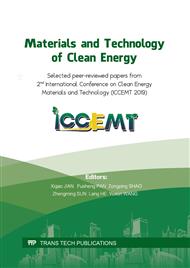p.13
p.21
p.31
p.39
p.47
p.56
p.64
p.72
p.83
Study on High Speed Laser Welding Technology and Numerical Simulation of Driving Line Guide Structure of PWR
Abstract:
The manufacturing accuracy of the guide structure of the PWR control rod drive line (abbreviated as the drive line) is very important to ensure the accurate performance of the function of the drive line. In this paper, the technology of high speed laser welding is studied, and the parameters of low stress and high speed laser welding are obtained. The heat source of laser welding, the shrinkage of laser welding weld and the welding deformation of laser welding are modeled and analyzed. The deformation simulation technology of laser welding of driving line guide structure is established to provide theoretical guidance for the manufacture of laser welding of this part. The specific contents include: laser welding test and thermal cycle test, macroscopic weld forming, residual stress test, heat source model establishment and parameter determination, laser welding weld shrinkage model establishment and welding deformation prediction. Finally, the driving line guide structure welded by high speed laser uses Φ 10.26mm bar drop gauge at the speed of 4 × 5 m / min to pass freely at 0 °, 90 °, 180 °and 270 °, and the friction force is less than 88N. The drop bar gauge of Φ10.26 mm is used to pass freely through the driving line guide structure welded by high speed laser at the speed of 4 ~5 m/min at 0 °, 90°, 180° and 270°, and the friction force is less than 88N.
Info:
Periodical:
Pages:
47-55
Citation:
Online since:
June 2020
Authors:
Price:
Сopyright:
© 2020 Trans Tech Publications Ltd. All Rights Reserved
Share:
Citation:


